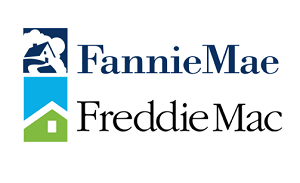Newsroom
FHFA proposes GSE liquidity requirements
 The Federal Housing Finance Agency (FHFA) Thursday issued a proposed rulemaking to implement minimum liquidity and funding requirements for the government-sponsored enterprises (GSEs), daily management reporting of the GSEs' liquidity positions, monthly public disclosure reporting requirements, and more.
The Federal Housing Finance Agency (FHFA) Thursday issued a proposed rulemaking to implement minimum liquidity and funding requirements for the government-sponsored enterprises (GSEs), daily management reporting of the GSEs' liquidity positions, monthly public disclosure reporting requirements, and more.
In a release, FHFA Director Dr. Mark Calabria said this proposal is "a companion to the new capital rule [that] will better ensure that the Enterprises are positioned to fulfill their countercyclical mission." The agency released the GSEs' final capital rule last month.
"Requiring the Enterprises to have enough liquid assets to continue supporting the mortgage market during times of severe stress protects taxpayers and the housing market," he added.
The proposed rule has four liquidity requirements, two cash-flow based requirements and two long-term liquidity and funding requirements.
The cash-flow based requirements include:
- a short-term 30-day requirement that, similar to the banking framework's Liquidity Coverage Ratio rule, is based on a cumulative net cash outflow analysis, plus an additional $10 billion cushion requirement that must be met by highly liquid assets, like Treasury securities; and
- a 365-day requirement extending the short-term cumulative cash outflow analysis to a full year. Over this intermediate term, the Enterprises may count borrowings against certain fixed income instruments that the Fixed Income Clearing Corporation deems eligible collateral (subject to a haircut), which they cannot count under the 30-day requirement. There is no separate excess cushion required under this metric.
The long-term liquidity and funding requirements include:
- the ratio of long-term unsecured debt to less-liquid assets must be greater than 120 percent; and
- the ratio of the spread duration of unsecured debt to the spread duration of retained portfolio assets must be greater than 60 percent.
As a leader in advocating for housing finance reform that ensures credit unions' unfettered access to the secondary mortgage market and facilitates the flow of liquidity through the market, NAFCU works closely with Calabria and the FHFA on these issues and will continue to advocate on behalf of the industry's best interests.
Share This
Related Resources
Get daily updates.
Subscribe to NAFCU today.
